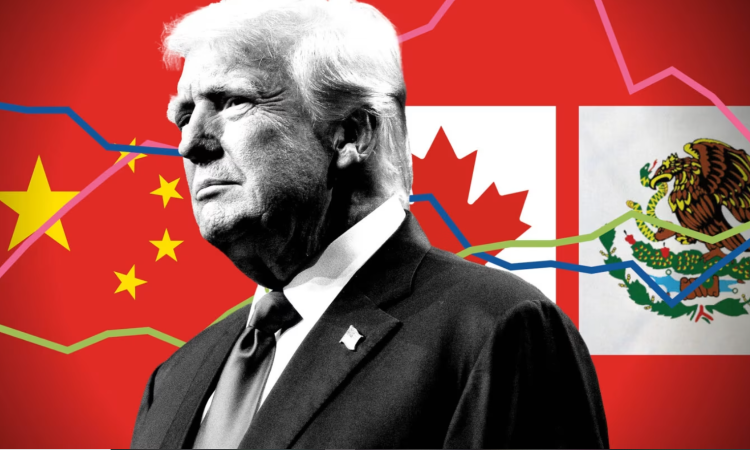
In a move that has sent shockwaves through global markets, President Donald Trump has taken an aggressive stance on trade by imposing new tariffs on imports from Canada, Mexico, and China. Speaking to reporters at Joint Base Andrews on Sunday night, Trump passionately defended the decision, citing economic imbalances and unfair trade practices as justification for the bold action.
Breaking Down the Tariffs
The executive order, signed on Saturday, invokes the International Emergency Economic Powers Act (IEEPA) to introduce steep tariffs: 25% on imports from Canada and Mexico and 10% on imports from China. The tariffs, set to go into effect on Tuesday, represent another chapter in Trump’s “America First” economic strategy, a policy that has drawn both praise and fierce opposition.
During his interaction with reporters, President Trump took direct aim at Canada, claiming the country has long exploited U.S. trade leniency.
“Canada has been very abusive of the United States for many years. They don’t allow our banks… That’s pretty amazing if we have a U.S. bank. They don’t allow them to go in.”
Trump further alleged that Canada has imposed strict trade barriers on U.S. energy and agricultural products, creating a one-sided trade relationship that he vowed to correct.
“Canada has been very tough for oil and energy. They don’t allow our farm products in, essentially. They don’t allow a lot of things in. And we allow everything to come in as a one-way street.”

The $200 Billion Question: Fact or Fiction?
One of the most striking claims from the President’s speech was that the U.S. subsidizes Canada by $200 billion annually—a statement that has sparked widespread debate among economists and political analysts. While Trump did not provide specifics, the remark has added fuel to the already tense trade relationship between the two neighboring nations.
“And for what? What do we get out of it? We don’t get anything out of it. I love the people of Canada. I disagree with the leadership of Canada, and something is going to happen there.”
What’s the Endgame?
With the tariffs set to take effect on Tuesday, attention now turns to how America’s key trading partners will respond. Will Canada and Mexico impose countermeasures? How will China react amid its ongoing economic tensions with Washington? And perhaps most critically—how will American businesses and consumers absorb the impact?
President Trump’s latest maneuver has put U.S. trade policy in the global spotlight, ensuring that the coming weeks will be pivotal in determining the economic and diplomatic trajectory of the nation.





